CFA standard TICA standard ACF standard Higher classification Cat | FIFe standard AACE standard Scientific name Felis catus Rank Breed | |
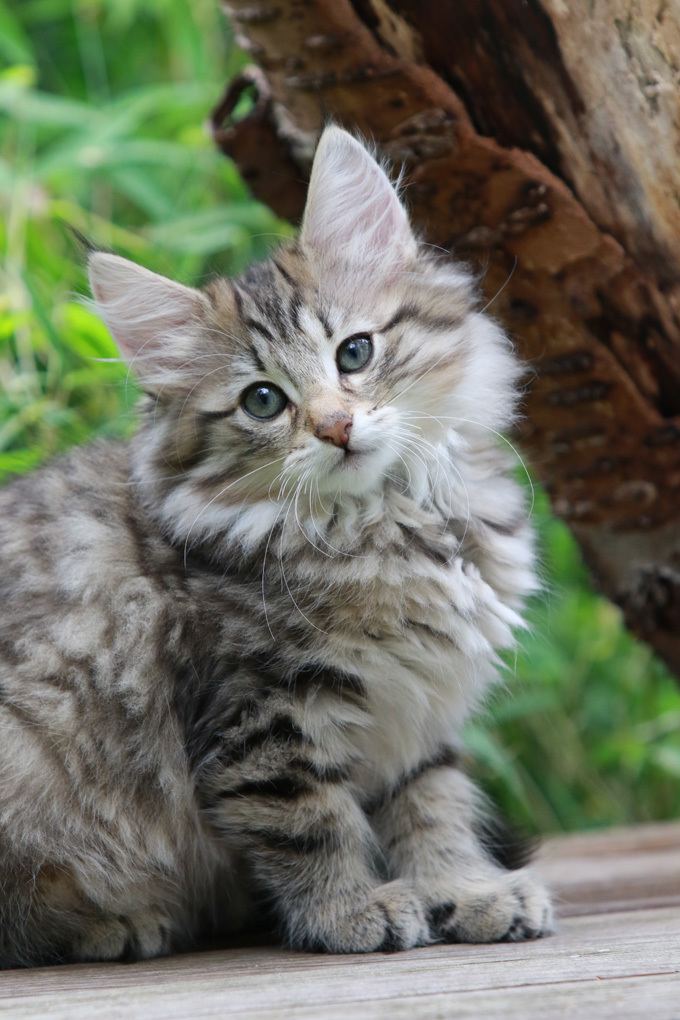 | ||
Other names Norsk skogkatt orNorsk skaukatt Similar Maine Coon, Ragdoll, Siberian cat, Persian cat, Bengal cat | ||
Norwegian forest cat show
The Norwegian Forest cat (Norwegian: Norsk skogkatt or Norsk skaukatt) is a breed of domestic cat originating in Northern Europe. This natural breed is adapted to a very cold climate, with top coat of glossy, long, water-shedding hairs and a woolly undercoat for insulation. Although this is uncertain, the breed's ancestors may have been a landrace of short-haired cats brought to Norway by the Vikings around 1000 AD, who may also have brought with them long-haired cats, like those ancestral to the modern Siberian and Turkish Angora breeds. During World War II, the breed became nearly extinct until efforts by the Norwegian Forest Cat Club helped the breed by creating an official breeding program. It was registered as a breed with the European Fédération Internationale Féline in the 1970s, when a local cat fancier, Carl-Fredrik Nordane, took notice of the breed and made efforts to register it. Currently, the Norwegian Forest breed is very popular in Norway, Sweden, Iceland and France.
Contents

It is a big, strong cat, similar to the Maine Coon breed, with long legs, a bushy tail and a sturdy body. The breed is very good at climbing, since they have strong claws. The lifespan is usually 14 to 16 years, though kidney and heart diseases have been reported in the breed. Specifically in this breed, complex rearrangements of glycogen branching enzyme (GBE1) can cause a perinatal hypoglycaemic collapse and a late-juvenile-onset neuromuscular degeneration in glycogen storage disease type IV.

History
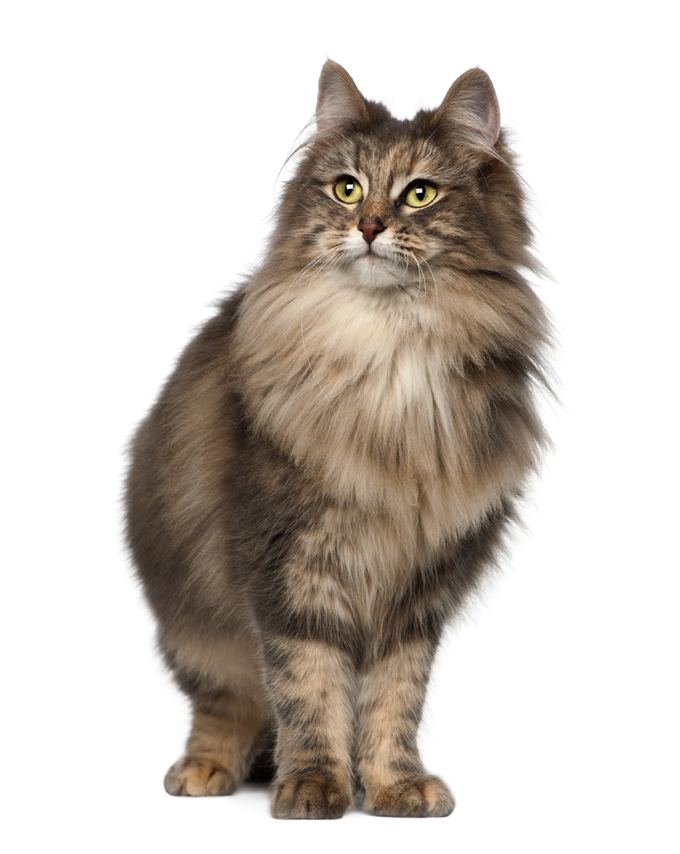
The Norwegian Forest cat is adapted to survive Norway's cold weather. Its ancestors may include black and white shorthair cats brought to Norway from Great Britain some time after 1000 AD by the Vikings, and longhaired cats brought to Norway by Crusaders. These cats could have reproduced with farm and feral stock and may have eventually evolved into the modern-day Norwegian Forest breed. The Siberian and the Turkish Angora, longhaired cats from Russia and Turkey, respectively, are also possible ancestors of the breed. Norse legends refer to the skogkatt as a "mountain-dwelling fairy cat with an ability to climb sheer rock faces that other cats could not manage." Since the Norwegian Forest cat is a very adept climber, author Claire Bessant believes that the skogkatt folktale could be about the ancestor of the modern Norwegian Forest breed. The name Norse skogkatt is used by some breeder and fancier organisations for the modern breed.
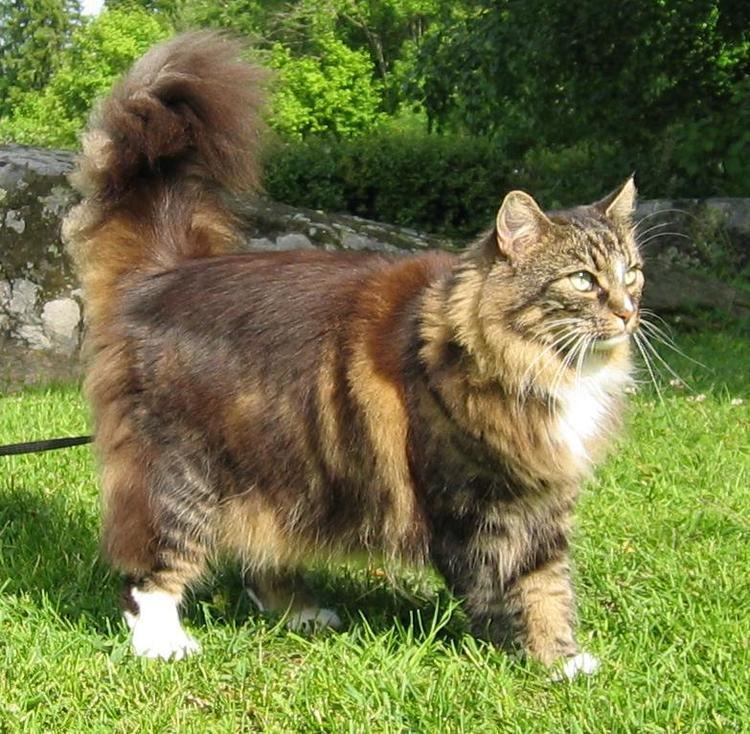
Most likely the ancestors of the Norwegian Forest cat served as ships' cats (mousers) on Viking ships. The original landrace lived in the Norwegian forests for many centuries, but were later prized for their hunting skills and were used on Norwegian farms, until they were discovered in the early twentieth century by cat enthusiasts.
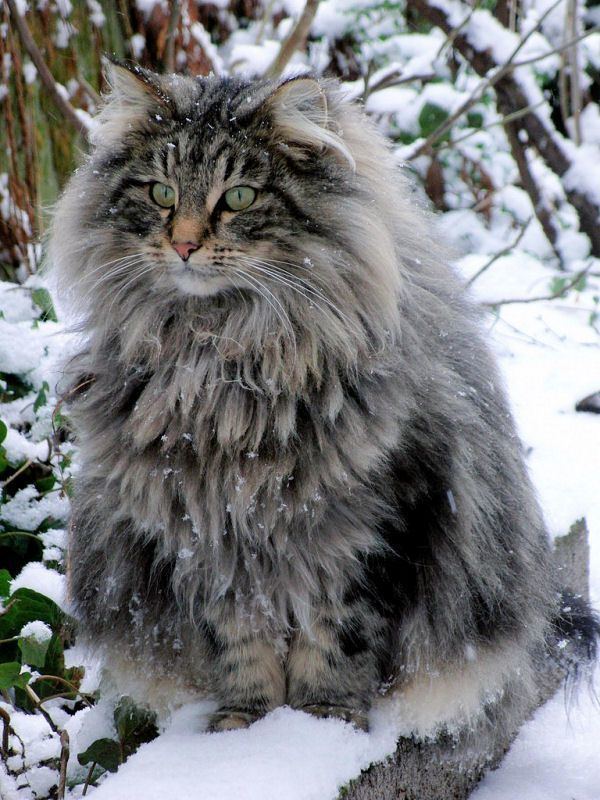
In 1938 the first organisation devoted to the breed, the Norwegian Forest Cat Club, was formed in Oslo, Norway. The club's movement to preserve the breed was interrupted by World War II. Owing to cross-breeding with free-ranging domestic cats during the war, the Norwegian Forest cat became endangered and nearly extinct until the Norwegian Forest Cat Club helped the breed make a comeback by developing an official breeding program. Since the cat did not leave Norway until the 1970s, it was not registered as a breed in the Fédération Internationale Féline (FIFe), the pan-European federation of cat registries, until Carl-Fredrik Nordane, a Norwegian cat fancier, took notice of the breed, and made efforts to register it. The breed was registered in Europe by the 1970s, and in the American Cat Fanciers Association in 1994. In 1978, it was recognized in Sweden, and in 1989, they were accepted as a breed in the United Kingdom by the Norwegian Cat Club of Britain.
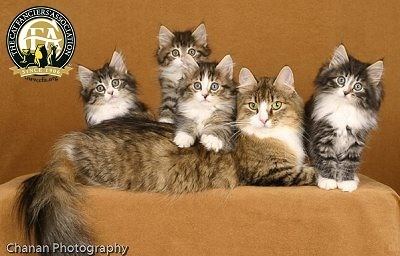
The Norwegian Forest breed is very popular in Norway and Sweden. Since 2003, it has been the fifth most popular cat breed in France, where there are about 400 to 500 births per year.
Breed description
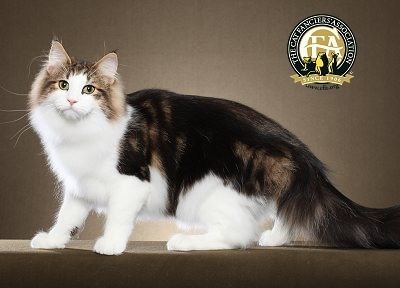
The Norwegian Forest Cat is strongly built and larger than an average cat. Adult females of the species will typically weigh in at 3.5 - 4.5 kg (7.7 - 10 lbs), while males tends to weigh in at 5.5 to 7.5 kg (12 - 16.5 lbs) . The breed has a long, sturdy body, long legs and a bushy tail. The coat consists of a long, glossy, thick and water-repellent top layer and a woolly undercoat and is thickest at the legs, chest and head. The profile of the breed is generally straight.
The head is long with an overall shape similar to an equilateral triangle, a strong chin, and a muzzle of medium length; a square or round-shaped head is considered to be a defect. The eyes are almond shaped and oblique, and may be of any colour. The ears are large, wide at the base, and high set, have a tufted top, are placed in the extension of the triangle formed by the head, and end with a tuft of hair like the ears of the lynx. All coat colors are accepted except chocolate and lilac and the dilutions fawn and cinnamon. Since the cats have very strong claws, they are very good climbers, and can even climb rocks.
Norwegian Forest cats have a quiet voice but can develop a loud voice if kept in a house with a dog. They are friendly, intelligent, and generally good with people. The Norwegian Forest cat has a lot of energy and can be very demanding of attention. Those cats that live primarily outdoors become swift and effective hunters, but the breed can also adapt to indoor life. If bought from a registered breeder in the USA, they tend to cost from $550 to $800. The cats usually live to be 14 to 16 years old. As they are heavy-boned and tall, they require more food than most other domestic breeds. Males are considerably heavier and larger-boned than females.
Health issues
Kidney and heart diseases have been reported in the breed. In an experiment directed by John C. Fyfea, Rebeccah L. Kurzhals, and others, it was concluded that a complex rearrangement in the breed's Glycogen branching enzyme (GBE1) can cause both a perinatal hypoglycemic collapse and a late-juvenile-onset neuromuscular degeneration in glycogen storage disease type IV in the breed. This disorder, while rare, can prove fatal to cats that have it. There are DNA tests available for GSD IV, and it is highly recommended (some cat associations obligate their Norwegian Forest cat breeder members) to carry out the DNA test before using such animals for breeding. PawPeds provide a pedigree database which comes together with health programmes, through publishing each single cat's test result, to provide useful information for breeders to make a well-informed breeding decision. The breed has also been known to suffer from hip dysplasia, which is a rare, partially hereditary disease of the hip joint.
